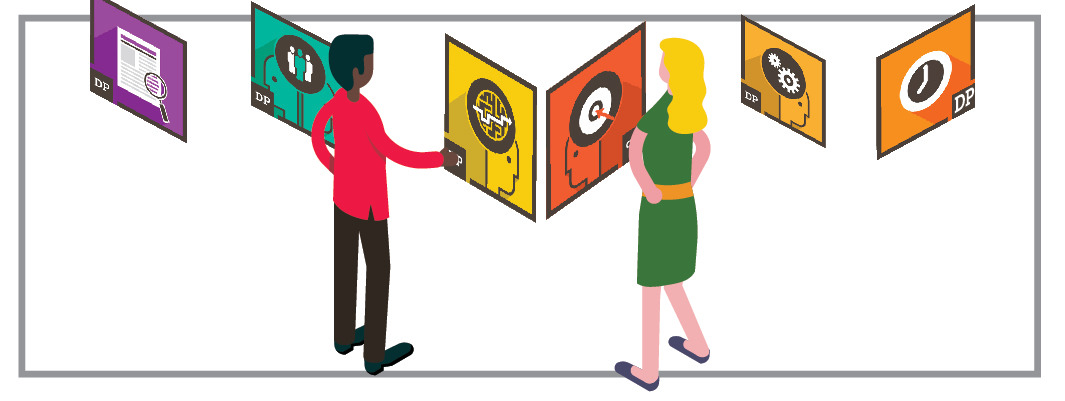
In our policy paper we suggest that micro-credentials, with the right tools, technologies, and virtual learning communities, could transform the teaching profession and fuel better outcomes for students.
Through the Center for Teaching Quality (CTQ)’s work (now in about a dozen states and districts as well as with the National Education Association), teachers tell us they really like micro-credentials and bite-sized opportunities to show what they know and can do. In addition, we see a number of new teaching policy trends that could accelerate the power and potential of micro-credentials: growing interest in performance-based licensing; increasing recognition of the limitations of recent teaching evaluation reforms; and deepening appreciation that 21st century schooling will not be realized without more leadership from more teachers.
No doubt, we have a long way to go. Half of U.S. states require some kind of performance assessment in order to be fully licensed. Under the Every Student Succeeds Act (ESSA), states have considerable flexibility in how to support and improve their teacher evaluation systems—but will they use the opportunity to create more flexible systems and value the importance of teachers spreading their expertise to one another? Twenty-two states offer a leadership license or endorsement for those who teach, but most teachers say that most of today’s career ladders look like those of yesterday, not tomorrow. Teachers also point out that their school schedules, workloads, and the make-up of their professional learning communities (PLCs) are not designed for the type of teacher-led inquiry many micro-credentials demand.
Can micro-credentials make a dent in these seemingly intractable problems? We believe so, if the following matters of policy and practice are addressed:
Controlling for quality. As the ecosystem evolves, teams of teachers, administrators, and researchers should provide guidance for which micro-credentials should be used for what purposes and how. Quality control in the micro-credentialing ecosystem is a must—especially when value is attached to what educators accomplish.
Counting what matters. To gain traction and legitimacy, decisions need to be made about which micro-credentials earn educators what kind of recognition—continuing education units (CEUs), stipends, awards, pathways to advanced degrees, etc.—and how much. Everything cannot matter in the same way.
Finding time. The top teacher working condition is time—the four-letter word of school reform and the micro-credentialing movement. Schools need to have teachers teach less so they can learn more from one another about how to teach more effectively. Doing so means that teaching schedules must look different than they have in the past.
Leveraging and recognizing expertise. School reform of today and tomorrow needs teacher leaders to be well-known and better utilized. Micro-credentials can help system leaders know which teachers and principals are good at what, and help them spread what they know. New tools and processes for using micro-credentialing data are in order.
Designing for effectiveness. Researchers have found that successful school reforms are ones that have “met the felt needs for the (educators) who would implement them” and helped teachers “to capitalize on existing tools, materials, and guidance.” State and local policies need to spur teacher engagement in the design of a more effective system of professional learning which they need and want. Teacher buy-in in the process is insufficient. Teacher ownership is a must.
In 2013, a poll found that 23 percent of American teachers were “extremely interested” or “very interested” in serving in a hybrid role as a teacher and leader, and half were at least “somewhat interested” in such an assignment. Isn’t it about time for teachers to lead without leaving the classroom? It sure seems like micro-credentials could be an effective means of identifying and utilizing teachers as leaders—and creating ways for them to show policymakers and the public their value. Every other profession has a way for its members to show their worth; it is time for teachers to be able to do the same. We hope our paper—and our experiences working with teachers, administrators, and policymakers—can pave the way for micro-credentials to advance the profession that makes all others possible.
To learn more about how micro-credentials can be an effective form of personalized professional development for educators, you can read our full paper, “Micro-credentials and Education Policy in the United States: Recognizing Learning and Leadership for Our Nation’s Teachers.” For more on educator micro-credentials, visit the Educator Micro-credentials initiative website and Digital Promise’s Micro-credential Platform as well as CTQ’s Micro-credentials Strategy Framework.
Read the other blog posts in this series: